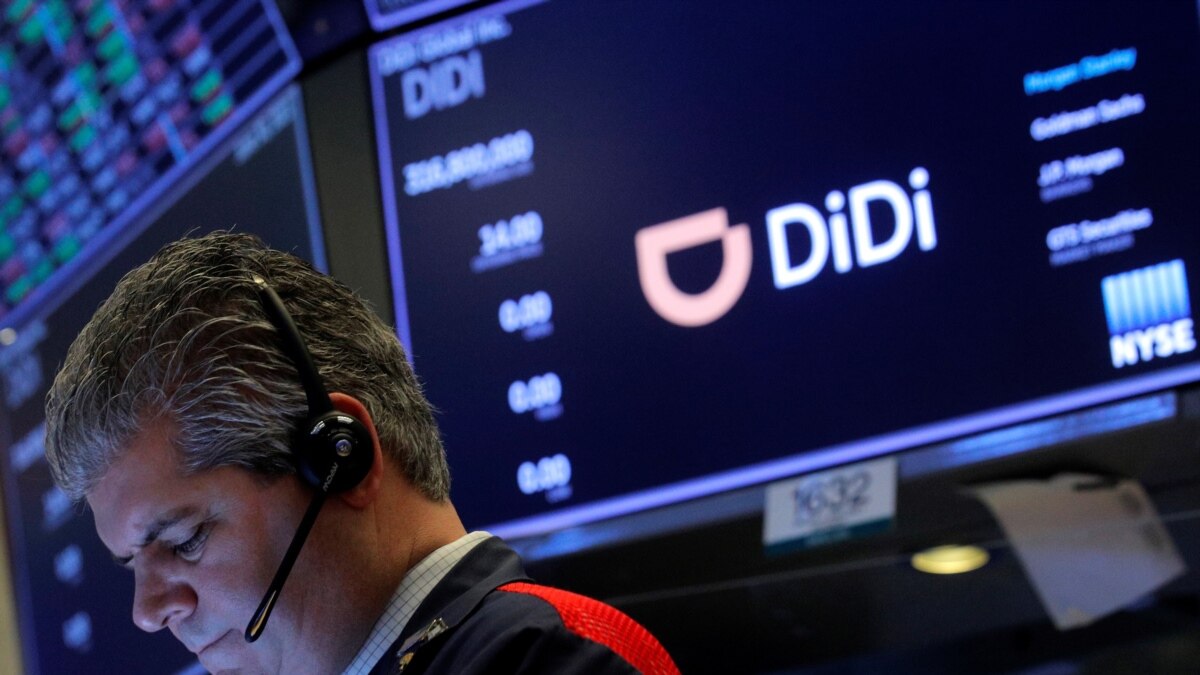美国金融专家督促立法者和执法者落实对中概股问责
滚动 国际美国的金融专家表示,赴美上市的中国企业长期缺乏透明性,导致美国投资者蒙受巨大损失。他们督促美国立法者和执法部门尽快落实对这些中国企业的问责制度。

美国的金融专家表示,赴美上市的中国企业长期缺乏透明性,导致美国投资者蒙受巨大损失。他们督促美国立法者和执法部门尽快落实对这些中国企业的问责制度。
在美国众议院金融服务委员会周二举办的一场听证会上,投资者保障联盟AssuranceMark的创始人罗斯(Samantha Ross)表示,中国公司在不遵守美国审计法规的情况下搭上了美国市场的便车,增加了美国投资者的风险,并损害了美国金融市场的信誉。
这位美国证券交易委员会的前特别顾问说:“当任何一组参与者未能遵守我们的标准时,这就发出了削弱整个市场信心的信号。因此,为了让遵守法规的美国和非美国公司继续受益,我们必须明确地全面执行我们的标准。”
过去20年来,中国公司大量前来美国上市。据安永会计事务所的数据,2021年上半年在美国完成外国首次公开募股(IPO)的公司中,有50%的是中国公司。截止2020年10月,共有248家中国公司在美国证券交易所上市,总市值突破2.2万亿美元。
然而,尽管中国公司从具有高度流动性和开放性的美国金融市场受益,但中国政府却长期以国家安全为由,拒绝让美国监管机构核查中概股的审查记录。由于缺乏财务透明性,中国上市公司屡屡被爆出财务造假等问题。
华盛顿RWR咨询公司资深分析师朱怀安(Claire Chu)在周二的听证会上表示,中国近期的监管大棒让美国金融业在量化政府干预企业行为方面遇到了挑战,这种不确定性对公司和投资者产生了实质性的不利影响。
朱怀安说:“中国政府将房地产稳定和社会控制置于商业利益之上。美国和中国市场越是交织在一起,美国投资者就越能敏锐地感受到北京政治驱动的市场干预所带来的余震。”
她还表示,一些金融机构在做评估时未能考虑到中国公司面临的政治风险,甚至将美国机构和个人投资者暴露在美国国家安全的对立面。
她说:“指数供应商支持纳入和加权的标准仅限于标准化属性,如市值和流动性,而忽略了声誉和中国的具体因素,如国家支持的人权侵犯和金融风险。美国投资者在无意中补贴了参与这些活动的中国公司,违背了美国的国家安全和外交政策利益。”
参与听证会的专家们督促,美国立法机构应该加强对中国赴美上市公司的监督,特别是落实在去年底通过的《外国公司问责法》。这部法律要求将连续三年未将审计底稿交给美国监管机构审查的外国公司从美国证券市场退市。
美国参议院还在今年6月通过另一项法案,该法案一旦颁布,中概股将只有两年的宽限期,未符合审核要求的上市公司最早将于明年面临退市的局面。
据《华尔街日报》报道称,中方有意愿推动中美在审计监管方面的合作,这也给与了美国官员在同中方谈判时的砝码,要求中国在金融市场改革方面做出更大努力。
美国国会研究处亚洲贸易和金融问题专家萨特(Karen Sutter)周二在同场听证会上指出,美国的市场参与仍然受到中国政府的严格控制,并且面临来自中国大型国有银行和国有企业的不公平市场竞争。
萨特说:“迄今为止,中国金融投资开放的有限性和针对性似乎在一定程度上是为了吸引美国资本进入中国经济中政府可能寻求弥补劣势的领域,像是不良资产和债务。美国资本更多地流向中国的债务市场可以创造增长机会,但也可能造成美国风险的增加。”
她举例称,中国政府为解决房地产行业债务问题的行动,包括中国房地产开发巨头恒大集团近日陷入债务危机,凸显了美国投资者面临的风险,特别是美国对中国债务市场的风险敞口不断扩大。
转载自 美国之音中文网
#Bannon
#DrLiMengYan1
#闫丽梦
#郭文贵
#班农
#LiMengYan
#COVID19
#YanLiMeng
#亚裔歧视
#Ethnicity
#CCP
#GenocideGames
In a pandemic, Navajo community steps up for its vulnerable
TEESTO, Ariz. (AP) — For as long as Raymond Clark has lived alone on this quiet stretch of the Navajo Nation under the watch of the “Praying Mountain,” he has depended on everyone yet no one.
The 71-year-old has no vehicle or running water but is content hitchhiking and carrying jugs down a dusty washboard road to replenish his supply. He works at home in Teesto painting murals and silversmithing, but friends often stop by.
Or at least they did before the pandemic. Now, rides and visits are scarcer in an area with no grocery store or gas station and where homes sit far apart.
The sense of community, though, never faded. With residents urged to stay home, tribal workers, health representatives and volunteers have stepped up efforts to ensure the most vulnerable citizens get the help they need.
“Our grandmas and grandpas teach us, you have to give back to your people,” said Sophia Francis, secretary for the Teesto Chapter, one of 110 tribal precincts that make up the vast reservation that extends into Arizona, New Mexico and Utah. “We have to help our elders. We have to help the community.”
Clark is among hundreds who live within the rural chapter, which functioned as a community lifeline even before the pandemic.
On a recent day, he stepped outside his home in the midst of juniper trees and greeted a trio of Teesto Chapter employees who were unloading firewood from a flatbed trailer. It was unseasonably warm, but Clark knew he’d need the wood for frigid days ahead.
Beside hauling wood, the chapter has filled water cisterns at people’s homes, arranged for a monthly food bank distribution, provided septic cleaning and a one-time supply of propane during the pandemic. A tribal lawmaker also distributed hay.
“The biggest thing I was trying to encourage is for people not to travel,” said Clara Tsosie, the chapter manager.
In many ways, the groundwork had already been laid. When Tsosie was hired as a chapter planner in 2015, she worked on a rural addressing system that included GPS coordinates to every home. Community assessments mean Teesto knows who needs a bathroom addition, water or wood.
The Winslow Indian Health Care Center worked with Teesto and other chapters in its service area to bring the wood split and ready to be delivered.
A network of community health representatives track who needs roads cleared to get dialysis, medication or emergency assistance. Many times, they go door to door to check on people. That practice has been amplified by the pandemic, with representatives disinfecting themselves and their vehicles at each visit, honking the horn when they arrive and talking to residents through windows or screen doors.
“They are thankful; they are appreciative,” said Sheila Bedoni, who oversees the health representatives in the Winslow-area unit. “And sometimes we show up when there’s nobody.”
In that, communities in the region have learned more about themselves and their expanding needs. Health representatives discovered new residents, families living in sheds and even found someone living on a mountain in a makeshift shelter.
“When it really happened, nobody knew what to do with the experience we had,” Bedoni said. “We learned a lot. There’s a lot of positive things we can take from it.”
Nearly 30,000 people on the reservation have been infected with COVID-19 over the past year, and more than 1,200 have died. What once had been a national hotspot is seeing a significant downturn in infections weeks after the holiday surges.
The tribe is planning a soft reopening Monday with 25% capacity for some businesses under certain restrictions. Still, mask mandates and daily curfews remain.
When COVID-19 hit the Teesto Chapter the day before Thanksgiving, Tsosie was floored and worried about her staff. The workers rallied to check up on an infected colleague, delivered food and prepared traditional herbs.
“Sometimes I think we all feel like we wanted to give up,” Tsosie said. “We can’t give up.”
Other chapters on the Navajo Nation have closed at times. Teesto never shut down completely. Before the pandemic, people went to the chapter house for internet access, fill water drums in the back of their pickups, check mail, dump trash and seek assistance for burials or other emergencies.
Those services are more controlled now. The public isn’t allowed in the main chapter building. When people walk up, they knock or are spotted on surveillance cameras, and the staff goes outside to greet them. The meeting hall has limited spots for students to do homework. Others catch the Wi-fi signal outside, from their cars.
Signs remind people to wear masks and social distance.
Clark used to spend a lot of time at the senior center next to the chapter house but doesn’t venture into nearby communities much now except to check his mail and get shots for chronic hip pain.
Before the pandemic, people regularly stopped by Clark’s two-bedroom house, where he has turned nearly every space into an art studio and sleeps on the couch. A mural on his kitchen floor illustrating Navajo men’s role in society soon will be installed at a local school.
In the living room, Clark giggles as he describes how he uses a plastic bin for hand washing and sponge baths. He fashioned a faucet with a foot pump, tubing and a 5-gallon bucket but drinks bottled water. Outside is an outhouse and a nameless, feisty puppy that someone dropped off before dawn one day.
Clark thinks back to his childhood in that area, taking care of sheep and shining a mirror into the sun to summon neighbors for a ride.
“We had to learn how to help ourselves, even at a young age,” he said.